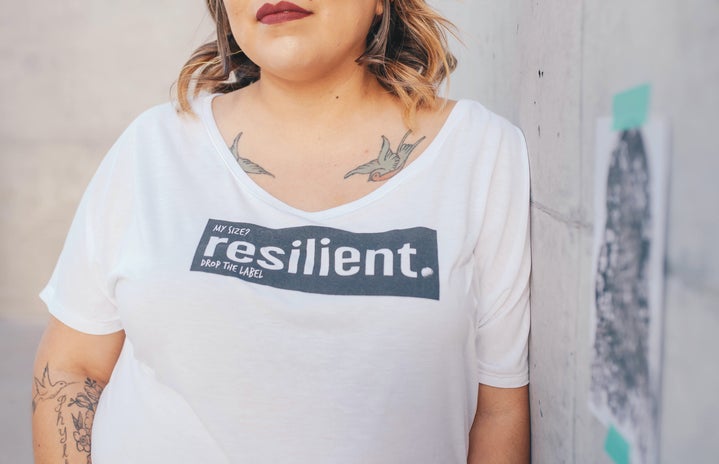Feminism noun fem·i·nism \ˈfe-mə-ˌni-zəm\
the theory of the political, economic, and social equality of the sexes
Feminism has always been simple at it’s roots: equality. It is us who have made the meaning and conversation about it so tricky, which is completely understandable because equality shouldn’t be taken lightly. Feminism is a thick subject and its meaning has been muddled over the past decades, but it always comes back to its origins despite its ability to change with the times and roll with the punches.
Over the years, this social movement has been classified into 3 major waves:
-
First wave (1830’s – early 1900’s): Women’s fight for equal contract and property rights
-
Second wave (1960’s – 1980’s): Broadening the debate
-
Third wave (1990’s – present): The “micropolitics” of gender equality
Way too often nowadays I hear multiple complaints of how feminisms is over-bearing and anti-men. Phrases such as ‘femme-nazi’ are frequently thrown around. I don’t even want to get started about the ‘I’m over feminism’ articles I see on my facebook feed.
These harsh overgeneralizations lack factual foundation and are down right wrong. Feminism is not something that one can be ‘over’, it is not a something that can be describe in one word. With a tiny bit of research it can be seen that feminism is a largely broad term that covers numerous branches of movement. Each branch has issues that are specific to them as well. Feminism is, and has always been, continuously growing and changing with time.
Feminism in the United States is usually broken down into 3 waves: the first, second and third. These titles can even sometimes be a little to general but they do serve their purpose in focusing on the issues that were important to women at the time.
The first wave of feminism began in the late nineteenth century and early twentieth century. Women began to realize they were being taken for granted in society. They also realized that the only way to have their voices heard was to gain political power. This made women’s suffrage one of the main feminist issues of the time. This movement planted the seed that women were and are fully capable to contribute to society just as much, if not more, than men.
The major critiques of this wave is the lack of diverse views. The main participants in this movement were middle-class, cisgendered, white, Western women.
While there are many similarities between first wave feminism and third wave (feminism today), there are also many differences. Third wave feminism completely redefines what it means to be a women. The women of the first wave were pushing the boundaries of their time, but they focused on the fact that they can be housewife and continuous members of society. They wanted to be recognized for their brains. While this is still true for feminist today, they also strongly push for the idea that women can have both brains and beauty. They are redefining words such as ‘slut’ and ‘bitch’ instead of running from them.
I probably broke my own rule in this article and harshly over-generalized feminism, but it honestly is so vast and detailed I can’t explain it all – I mean hey, people literally major is women studies. However, despite the time there is still an underlying theme that is important to all feminist… equality! We have come so far since the first wave, but we are still far from the finish line. We must stick together, stop judging each other so harshly, and most importantly learn from our sisters of the past… we are all in this together.
Second wave vs Third wave:
The second wave of Feminism came right after World War II, focusing mainly on the workplace, family, reproductive rights and sexuality of women. Some experts critique what the movement focused on during this time, as they think it was reduced mainly to only middle-class white women ignoring women of color, working-class women and queer women. This was mainly because women of the aforementioned communities didn’t feel like their voices were being heard and in order to get some respect for their organizations, communities, and jobs, they had to address gender equality concerns. During this time women cared so much about all civil rights movements that they wanted to straighten their voices by fighting for gender equality first. The movement grew with legal victories such as the Equal Pay Act and the Civil Rights Act. Another goal achieved during this movement was changing social attitudes in gender roles, with by repealing social laws that were based on sex and women started integrating the “boys clubs” like Military academies, NASA, the Supreme Court, to name a few.
The third wave arose partially from the failures of the second wave and the backlash against initiative movements created during those years. However, today more than ever, the term “feminist is received less critically by the female and male population due to different feminist outlooks. Feminism is a movement with many faces, for example, there are radical feminists, ego-cultural feminist, the liberal, the academic, ecofeminists, the list goes on. This era of feminism has definitely grown thanks to social media, breaking barriers and making the issues that we prefaced by previous waves of women, lighter in the sense that we can share our stories and join forces to fight against them. We are still working on defeating the pay gap to end violence against women. We’re still working towards improving women’s reproductive rights, by educating ourselves and others. We’re still fighting for acceptance and trying to understand the term “feminism”. However, it should be noted that compared to what first wave feminist were seen as, we’ve made a huge leap.
Yes, we’re still fighting some of the same battles women before us fought, but the difference is that now, we are allowed to define feminism for ourselves by incorporating our own identities and beliefs into what feminism is and what it can become through our perspective. I completely believe that the diversity of opinions has yield space for some great personal and political revelations. As long as the conversations we have remain respectful and open-minded, having differing opinions might be beneficial for feminism.
Bottom line, the goal is homogenous: Feminism aims for gender equality. If that’s what being a feminist is -who wouldn’t want to be one!?


